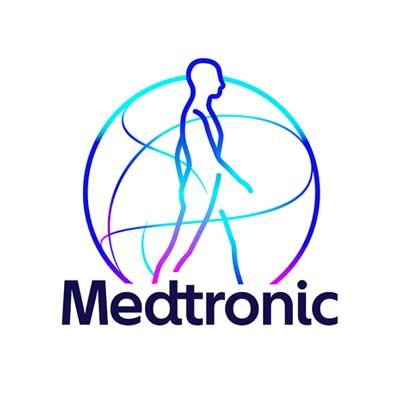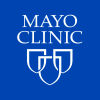Request Demo
Last update 08 May 2025
Gastric Antral Vascular Ectasia
Last update 08 May 2025
Basic Info
Synonyms Antral Vascular Ectasia, Antral Vascular Ectasias, Ectasia, Antral Vascular + [32] |
Introduction A distinct vascular lesion in the PYLORIC ANTRUM that is characterized by tortuous dilated blood vessels (ectasia) radiating outward from the PYLORUS. The vessel pattern resembles the stripes on the surface of a watermelon. This lesion causes both acute and chronic GASTROINTESTINAL HEMORRHAGE. |
Related
16
Clinical Trials associated with Gastric Antral Vascular EctasiaNCT06830317
A Multicenter, Observational, Prospective Study on the Efficacy of Endoscopic Radiofrequency Treatment in Reducing the Need for Blood Transfusions Compared with Conventional Therapies in Patients with Gastric Antral Vascular Ectasia (GAVE)
The aim of the study therefore is to permanently resolve the existence of the bleeding sites caused by Gave and reduce both bleeding episodes and the need for transfusion in such patients applying "Barrx" (trademark) radiofrequency endoscopic ablation technology in selected cohort of patients that will be defined the patient inclusion section.
Start Date02 Apr 2025 |
Sponsor / Collaborator |
NCT06772480
Thalidomide Versus Argon Plasma Coagulation in Gastric Antral Vascular Ectasia(GAVE)-Related Anaemia in Cirrhosis (TAG Trial)- A Randomised Controlled Trial
Gastric Antral Vascular Ectasia (GAVE) is an erosive form of gastritis distinguished by veno-capillary ectasia, which manifests as tortuous columns of dilated vessels. Histologically, these vessels show dilated mucosal capillaries filled with fibrin thrombi, accompanied by fibromuscular hyperplasia and spindle cell proliferation of the lamina propria. GAVE is prevalent in about 12% of patients with cirrhosis, with 60-70% of these patients becoming transfusion-dependent due to severe anaemia caused by GAVE related bleeding. The most commonly used treatment for GAVE is endoscopic therapy using Argon Plasma Coagulation (APC), which, while effective, often requires multiple sessions due to a high recurrence rate of 30-60%. These frequent interventions increase the burden on patients and healthcare systems. As a result, alternative treatments have been sought. Thalidomide, known for its potent antiangiogenic properties, significantly lowers vascular endothelial growth factor (VEGF) levels, offering a promising non-invasive treatment option. Early studies, such as those by García-Pagán have demonstrated thalidomide's effectiveness in reducing transfusion requirements and managing bleeding in cirrhotic patients with GAVE, yet its comprehensive efficacy and safety profile remains under-studied. This project aims to rigorously evaluate the efficacy and safety of thalidomide compared to APC in managing GAVE-related anemia in cirrhotic patients. Through a controlled trial, this study will provide vital data to potentially shift treatment paradigms, enhance patient quality of life, and reduce the need for repetitive invasive procedures.
Start Date05 Jan 2025 |
Sponsor / Collaborator |
NCT06306963
Prevalence of Gastric Motor Dysfunction and Upper GI Symptoms in Gastric Antral Vascular Ectasias
The researchers are trying to find out more about Gastric Antral Vascular Ectasia (GAVE). This is a condition that affects the blood vessels in the stomach, leading to their enlargement and possible bleeding. It can also cause symptoms such as abdominal pain and nausea. By participating in this study, you will help us learn how often these symptoms occur and how they relate to stomach functioning.
Start Date22 Mar 2024 |
Sponsor / Collaborator |
100 Clinical Results associated with Gastric Antral Vascular Ectasia
Login to view more data
100 Translational Medicine associated with Gastric Antral Vascular Ectasia
Login to view more data
0 Patents (Medical) associated with Gastric Antral Vascular Ectasia
Login to view more data
632
Literatures (Medical) associated with Gastric Antral Vascular Ectasia01 Mar 2025·The American Journal of Dermatopathology
The Cutaneous Pathology of Erythromelalgia and Its Role in Establishing Critical Clues Regarding Pathogenesis
Article
Author: Guo, Lily ; Kalomeris, Taylor ; Magro, Cynthia
22 Feb 2025·Cureus
Development of a Novel Classification for Gastric Antral Vascular Ectasia Based on Upper Gastrointestinal Endoscopy Findings in Patients With Gastrointestinal Bleeding and Anemia
Article
Author: Singh, Abhishek ; Lnu, Pragya ; Mishra, Priya ; Atam, Isha ; Arora, Gunjan ; Mishra, Ajay K ; Devi, Archana ; Atam, Virendra ; Patwa, Ajay ; Chaudhary, Anurag
01 Feb 2025·International Journal of Biological Macromolecules
Poly(ADP-ribose) polymerase FonPARP1-catalyzed PARylation of protein disulfide isomerase FonPdi1 regulates pathogenicity of Fusarium oxysporum f. sp. niveum on watermelon
Article
Author: Song, Fengming ; Guo, Mengmeng ; Wang, Jiajing ; Yan, Yuqing ; Lou, Jiajun ; Li, Dayong ; Xiong, Xiaohui ; Noman, Muhammad ; Gao, Yizhou
1
News (Medical) associated with Gastric Antral Vascular Ectasia06 Aug 2024
MONTVALE, N.J., Aug. 6, 2024 /PRNewswire/ -- PENTAX Medical America Inc., a division of the HOYA Group, is proud to announce two significant updates to its C2 CryoBalloon product line. These advancements are designed to enhance patient care and expand treatment options for gastroenterologists.
1. 180° C2 CryoBalloon™ Catheter for Barrett's Esophagus:
Continue Reading
180° C2 CryoBalloon™ Catheter for Barrett’s Esophagus
Increased Treatment Area and Efficiency: The 180° C2 CryoBalloon Catheter is the first cryogenic product specifically designed to treat large areas of Barrett's esophagus. The unique 180° design allows gastroenterologists to cover larger areas quickly, reducing the overall procedure time. This establishes the C2 CryoBalloon 180° as an ablative therapy that treats large tissue areas, minimizes patient discomfort, and demonstrates 90% disease regression at the first surveillance visit.
2. New Clinical Indication for Gastric Antral Vascular Ectasia (GAVE):
Less Painful Treatment Option: The C2 CryoBalloon solution now offers a novel treatment for GAVE. This minimally invasive cryogenic technology proves to be a less painful alternative to existing available treatment. C2 CryoBalloon System targets affected areas with quick precise cryotherapy, minimizing the need for frequent packed red blood cell transfusions at 6 months when compared to existing treatment modalities.
FDA Clearance: PENTAX Medical has obtained FDA clearance for the use of the C2 CryoBalloon system in treating GAVE. This clearance confirms the system's safety and efficacy, offering gastroenterologists a new tool to enhance patient care.
"The introduction of the 180° C2 CryoBalloon Catheter and the new indication for GAVE treatment represent significant advancements in patient care." This was emphasized by David Hedrick, Senior Director of the C2 CryoBalloon Franchise. "These innovations not only provide more effective and less painful treatment options but also greatly expand the application of the C2 CryoBalloon technology. By offering faster and safer procedures, we are enhancing the quality of life for patients and giving gastroenterologists powerful new tools to address complex conditions."
For more information, please visit .
About PENTAX Medical
PENTAX Medical is a division of HOYA Group. The company's mission is to improve the standard of patient care and quality of healthcare delivery by providing the best endoscopic products and services with a focus on QUALITY, CLINICALLY RELEVANT INNOVATION, and SIMPLICITY.
PENTAX Medical strives to align with the healthcare community's Triple Aim goals through transparent partnerships with its customers and by providing the highest quality solutions to help them reach their goals, including enabling customers to improve patient outcomes by offering evidence-based solutions across the continuum of care; ensuring value by supporting the customers to improve their efficiency and minimize their healthcare costs; and enriching patient and provider's experience by empowering every member of the care team to achieve optimal outcomes through products, education, and support.
Focused on the outcome instead of technological features, PENTAX Medical listens to the healthcare community and their patients, understands their daily obstacles and helps improve endoscopy with smart innovations.
For more information:
About HOYA
Founded in 1941 in Tokyo, Japan, HOYA Corporation is a global technology and med-tech company and a leading supplier of innovative high-tech and medical products. HOYA is active in the fields of healthcare and information technology, providing eyeglasses, medical endoscopes, intraocular lenses, and optical lenses, as well as key components for semiconductor devices, LCD panels, and hard disk drives. With over 150 offices and subsidiaries worldwide, HOYA currently employs a multinational workforce of 37,000 people. For more information, please visit: .
SOURCE PENTAX Medical
Analysis
Perform a panoramic analysis of this field.
login
or

AI Agents Built for Biopharma Breakthroughs
Accelerate discovery. Empower decisions. Transform outcomes.
Get started for free today!
Accelerate Strategic R&D decision making with Synapse, PatSnap’s AI-powered Connected Innovation Intelligence Platform Built for Life Sciences Professionals.
Start your data trial now!
Synapse data is also accessible to external entities via APIs or data packages. Empower better decisions with the latest in pharmaceutical intelligence.
Bio
Bio Sequences Search & Analysis
Sign up for free
Chemical
Chemical Structures Search & Analysis
Sign up for free


